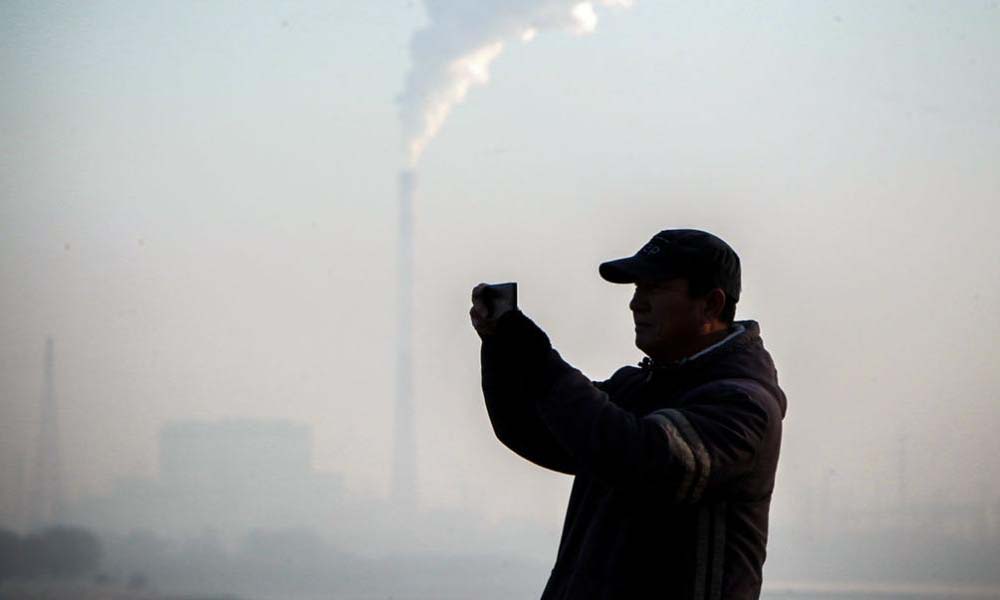East Asia Blog Series
Accelerating Climate Change Financing in the People’s Republic of China
Xinjian Liu 15 Oct 2024
Establish frameworks, leverage digital innovations, and strengthen stakeholder capacity.
Overview
Climate change financing is a key part of green finance, essential for driving investment towards climate action and achieving the People’s Republic of China’s (PRC) carbon peaking and neutrality goals. As the world’s largest developing country, the PRC’s climate policies will heavily influence global progress under the UN Framework Convention on Climate Change and the Paris Agreement. To meet its climate targets, the PRC must prioritize climate finance by enhancing mechanisms and fostering innovation in financial products at both national and local levels.
The PRC faces a significant funding gap in climate finance, hampered by expertise shortages, limited investment experience, and long return timelines. These challenges deter financial institutions from investing in climate-friendly technologies. To address this, the Asian Development Bank (ADB) approved a $1 million technical assistance grant for the PRC in September 2020. The project developed project guidelines, built a digital platform, and strengthened stakeholder capacity to help professionalize climate financing, streamline investor-developer partnerships, and attract capital to low-carbon technologies.
This article summarizes development solutions and practical insights from the project.
Developing Guidelines to Advance Climate Finance and Emission Reduction
Future Proof Climate Change Financing Guideline
An effective framework is crucial for managing climate finance projects. The project developed the Future Proof Climate Change Financing Guideline to advance climate action by setting clear project criteria, promoting technology adoption, and evaluating environmental benefits. Aligned with national climate goals, it offers a standardized approach to creating and assessing a robust project library.
By refining green finance frameworks, the guideline prioritizes projects in eight sectors: electricity, industry, transportation, buildings, methane, nitrous oxide, fluorinated gases, and carbon sinks. It also expands mitigation to include low-carbon services and adaptation to cover sponge city infrastructure, ecological restoration, and more.
The guideline’s assessment process includes project taxonomy, threshold evaluation, and technology analysis. By measuring technological advancements and environmental impacts, it ensures that funded projects deliver meaningful climate benefits. This approach supports the growth of climate finance nationwide, especially in pilot cities.
China Certified Emission Reduction Plus Guideline
Meanwhile, the China Certified Emission Reduction Plus Guideline, another output from the project, directs investment toward high-impact voluntary emission reduction projects. By applying strict evaluation criteria, it ensures that social capital backs projects with significant environmental and social benefits, accelerating the PRC’s journey to carbon neutrality.
Drawing from international practices like the Clean Development Mechanism (CDM), Verified Carbon Standard (VCS), and others, this guideline adheres to additionality, permanence, and no-double-counting principles, while considering PRC-specific contexts. It introduces innovative approaches for crediting period management, implementation, and digital Measurement, Reporting, and Verification (MRV).
By dividing the evaluation into initial and subsequent stages, the guideline allows for thorough project assessment. It mandates environmental monitoring throughout the project lifecycle. Clear evaluation criteria help investors identify high-quality projects. The digital MRV standard enhances efficiency and ensures data integrity through automated monitoring and reporting.
Building a Digital Platform to Boost Climate Finance
The project built the Climate Change Financing Acceleration Platform (CCFAP), a digital tool that simplifies climate project development, financing, and management through AI, IoT, and blockchain. It matches projects with investors, speeds up implementation, and supports efficient data management and verification.
The platform operates using a “1+1+N+X” system, combining standardized guidelines, digital tools, and flexible project models. It serves project developers, financial institutions, third-party service providers, and regulators, offering functions such as project registration, data management, evaluation, and carbon credit management.
Blockchain ensures data security and transparency, particularly for carbon credits. The platform’s digital measurement, reporting, and verification (MRV) improves data accuracy and lowers costs, promoting climate finance at national and local levels.
Strengthening Stakeholder Capacity
To enhance climate investment infrastructure and stakeholder skills, the project team held seven training sessions in Qingdao, Xinyang, Lanzhou, Baoding, Xiangtan, Guangzhou, and Beijing. The sessions covered carbon peaking, neutrality policies, green finance, climate investment, carbon markets, project standards, and the CCFAP platform. Feedback from participants was positive.
A total of 1,203 institutions and 2,150 individuals from government, NGOs, finance, technology, research, and media sectors attended the training.
Recommendations
Expand the application of digital technologies
Blockchain supports the development and trading of carbon credits and digital certificates, increasing trust and transparency. As the PRC advances toward carbon neutrality, blockchain will validate projects and help financial institutions invest in projects based on carbon credit value. It also enhances project audits, improving credit ratings. Expanding digital tools for climate finance is key to accelerating progress.
Develop standards
Voluntary emission reduction projects are often undervalued due to the process complexity in verifying the additionality and climate benefits of the projects and the general uncertainty of the projects. Based on the application of blockchain in the carbon credit market and the addition of the two guidelines, the Future Proof Climate change financing Guideline and the Certified Carbon Emission Reduction Plus Guideline, it can provide an effective market incentive and transformation pathway for eligible voluntary emission reduction projects to receive direct financing and gain revenue, which will support institutions, enterprises and individuals to participate in project development and to explore more projects with climate benefits, further enrich the climate change financing ecosystem, and accelerate the achievement of carbon neutrality targets.
Improve data infrastructure
A low-carbon data system integrates emissions, financial institutions, and carbon market data, supporting information sharing and decision-making. Future policies should focus on strengthening climate data infrastructure to ensure efficient allocation and use of climate funds. A quantitative indicator system should also be established to measure mitigation, adaptation, ecological development, and climate investment benefits.
Prioritize policy development
Policies and standards should focus on key technologies and projects in priority areas. Stronger policies are needed to address funding gaps, climate adaptation, and investment services. The goal is to accelerate climate mitigation, improve adaptation capacity, and reduce vulnerability.
Align market and policies
High-quality project development requires policies to support low-carbon technologies and industries. Priorities should include strategic and emerging industries, modern services, and green circular economies. Policies should encourage demonstrative low-carbon projects and provide subsidies for low-carbon products and services, such as optimizing energy use in transportation and construction. Coordinated policies will enable quicker project funding and development.
Author

Xinjian Liu
Senior Project Officer (Energy), East Asia Department, Asian Development Bank
This blog is reproduced from the Asian Development Blog.


